Welcome, fellow ocean enthusiasts, to the mesmerizing world of hammer corals! These captivating creatures, also known as Euphyllia, are a stunning addition to any marine ecosystem or reef tank. With their distinctive hammerhead-like appearance and vibrant colors, hammer corals have captivated the hearts of aquarists and marine biologists alike. In this article, we will embark on a thrilling underwater journey to explore the fascinating features of hammer corals, their ecological significance, and how to provide them with the best care in a reef tank. So, let’s strap on our diving gear and dive right in!
Table of Contents
Hammer Coral Overview
- Scientific Name: Euphyllia sp.
- Common Names: Hammer Corals
- Origin: Found in Indo-Pacific regions like the Great Barrier Reef, Red Sea, and Indonesia.
- Appearance: Unique hammerhead tentacles, vibrant colors (green, brown, purple).
- Lighting and Flow Requirements: Thrives under moderate lighting and moderate water flow.
- Difficulty Level: Considered beginner-friendly due to hardiness and adaptability.
Unveiling the Hammer Corals
Hammer corals belong to the family Euphyllidae and are characterized by their hammerhead-shaped tentacles, which give them their unique name. They are found in various regions of the Indo-Pacific, such as the Great Barrier Reef, the Red Sea, and the waters around Indonesia. These marvelous creatures are classified into two main types: the Wall Hammer Coral (Euphyllia ancora) and the Branching Hammer Coral (Euphyllia parancora).
Mesmerizing Features of Hammer Corals
Hammer corals are true wonders of nature, boasting a range of enchanting features that make them stand out in the marine world:
- Hammerhead Tentacles: The most striking feature of these corals is their tentacles, which resemble the head of a hammer, hence their name! These tentacles come in various mesmerizing colors, including green, brown, purple, and even fluorescent shades.
- Fluorescent Magic: Under the ethereal glow of ultraviolet light, hammer corals exhibit a breathtaking display of fluorescent colors, creating a mesmerizing spectacle for divers and aquarium enthusiasts.
- Photogenic Personalities: Loved by underwater photographers, hammer corals are known for their photogenic appeal, making them a favorite subject for capturing stunning reef snapshots.
- Dazzling Growth Forms: The Wall Hammer Coral grows as a single large polyp attached to the substrate, while the Branching Hammer Coral develops multiple branches, resembling a miniature underwater tree.
- Extended Tentacles: In the evening, when nightfall brings the cover of darkness, hammer corals extend their tentacles to capture passing zooplankton and small marine organisms, revealing a whole new aspect of their nocturnal behavior.
Ecological Significance of Hammer Corals
Beyond their aesthetic appeal, hammer corals play a vital role in maintaining the health and balance of marine ecosystems. These coral colonies create complex habitats, providing shelter and refuge for a diverse range of marine life. Here’s why hammer corals are essential components of the oceanic symphony:
- Biodiversity Hotspots: Hammer corals offer a diverse microhabitat to a plethora of marine organisms, such as shrimp, crabs, and small fish, creating a bustling ecosystem within their polyps and branches.
- Coral Reefs’ Architects: In the larger context of coral reefs, hammer corals contribute to the formation of the reef structure. They are among the reef-building corals, which means their calcium carbonate skeletons build the foundation for other corals to settle upon.
- Food and Nurture: The extended tentacles of hammer corals provide a source of food for various marine creatures, while the branching structure offers a safe space for larval settlement and growth.
- Symbiotic Relationships: Like other coral species, hammer corals have a symbiotic relationship with tiny algae called zooxanthellae. These algae live within the coral tissues and provide essential nutrients through photosynthesis, supporting the coral’s growth and health.
Setting Up the Perfect Home for Hammer Corals
Choosing the Right Aquarium and Tank Size
Creating a thriving environment for hammer corals starts with selecting the appropriate aquarium and tank size. A spacious tank with ample room for growth and expansion allows hammer corals to flourish and display their full splendor. Keep in mind that the larger the tank, the more stable the water conditions, which is vital for the health of your corals and the entire aquatic ecosystem.
Creating the Ideal Lighting Conditions
Lighting is a key factor in the success of keeping hammer corals. They require moderate to high levels of light, as it fuels the photosynthetic activity of the zooxanthellae living within their tissues. LED lights are commonly used in reef aquariums as they provide customizable and energy-efficient lighting options. However, it’s essential to strike a balance, as excessive light can lead to coral bleaching, while inadequate light may hinder their growth and coloration.
Water Parameters and Quality: Temperature, Salinity, and pH
Maintaining stable water parameters is essential for the health and well-being of hammer corals. The ideal temperature for most hammer corals ranges between 74°F to 82°F (23°C to 28°C), while salinity should be kept at 1.025 specific gravity. Monitoring and regulating pH levels between 8.1 to 8.4 helps maintain a stable and suitable environment for these delicate creatures.
The Importance of Proper Water Flow and Circulation
Water flow and circulation play a crucial role in ensuring the overall health of your reef tank. Adequate water movement helps distribute essential nutrients and oxygen, while also preventing the buildup of debris and detritus. Hammer corals benefit from a gentle and intermittent flow, simulating natural ocean currents. Powerheads and wave-makers are commonly used to achieve the desired water flow, ensuring a well-ventilated and nutrient-rich environment for your corals.
Hammer Corals in Reef Tanks: Care and Maintenance
The allure of hammer corals has led to their popularity among aquarium hobbyists. If you’re considering adding these magnificent creatures to your reef tank, follow these tips to ensure their well-being:
- Water Quality is Key: Maintaining stable and pristine water conditions is crucial for the health of hammer corals. Regularly test the water parameters, including temperature, salinity, pH, and nutrient levels, and make necessary adjustments to ensure they stay within the optimal range.
- Moderate Lighting: Hammer corals thrive under moderate lighting conditions. Avoid placing them directly under high-intensity lights, as this may cause bleaching and stress.
- Proper Placement: Choose a suitable spot in your tank that provides adequate flow and water movement for the corals. Ensure they have enough space to expand their tentacles without touching other corals, as aggressive stinging can occur.
- Feeding Hammer Corals: While hammer corals rely on photosynthesis for nutrition, they also benefit from supplemental feeding. Offer small marine organisms, such as brine shrimp or copepods, occasionally to enhance their growth and vibrancy.
- Mindful Coral Placement: Be cautious when placing hammer corals near other corals, as some species may exhibit territorial behavior and aggressive interactions. Leave enough space between different coral types to prevent territorial disputes.
- Regular Maintenance: Perform routine tank maintenance, including cleaning and water changes, to keep the tank environment stable and free from excess detritus.

Hammer Corals and their Symbiotic Relationships
The Relationship Between Corals and Zooxanthellae
Hammer corals, like many other coral species, maintain a symbiotic relationship with photosynthetic algae called zooxanthellae. These tiny algae live within the coral’s tissues and harness the energy from light through photosynthesis, providing essential nutrients like glucose, glycerol, and amino acids to the coral. In return, the coral offers a protected environment and essential compounds for the algae’s photosynthetic process.
Coral Bleaching: Causes, Prevention, and Remedies
Coral bleaching is a phenomenon that occurs when corals expel their zooxanthellae due to stress, resulting in a loss of their vibrant colors. This process is often triggered by environmental factors such as increased water temperatures, pollution, or changes in water chemistry. To prevent coral bleaching, maintaining stable water conditions, reducing pollution, and adopting sustainable reef-keeping practices are essential. In cases of bleaching, providing optimal care and mitigating stressors can help corals recover their zooxanthellae and colors.
Other Symbiotic Partners: Clownfish, Shrimp, and More
Apart from their relationship with zooxanthellae, hammer corals also form symbiotic partnerships with other marine organisms. One of the most well-known examples is the relationship between hammer corals and clownfish. Clownfish seek refuge among the coral’s tentacles, gaining protection from predators, while the corals benefit from the nutrients released by the fish. Similarly, various species of shrimp can form symbiotic relationships with hammer corals, providing cleaning services and removing debris from the coral’s surface.
Enhancing Symbiosis for a Thriving Reef Environment
Promoting symbiosis within your reef tank is essential for the overall health and balance of the ecosystem. Encourage the presence of symbiotic partners like clownfish and shrimp by providing suitable hiding spots and safe zones near the hammer corals. Creating an environment where different species can interact harmoniously enhances the beauty and natural dynamics of your reef tank.
Propagation and Fragging Techniques
The Basics of Coral Propagation: Sexual and Asexual Reproduction
Coral propagation is the process of growing new coral colonies from existing corals. There are two primary methods of coral propagation: sexual and asexual reproduction. Sexual reproduction involves the release of eggs and sperm into the water, leading to the formation of coral larvae that eventually settle and grow into new colonies. Asexual reproduction, also known as coral fragging, involves fragmenting a healthy coral colony and allowing the fragments to grow into separate colonies.
Step-by-Step Guide to Fragging Hammer Corals
Fragging hammer corals can be a rewarding and creative process, but it requires careful handling and proper techniques. To begin, ensure you have a healthy and robust parent colony to take the fragments from. Use clean and sterilized tools to carefully cut or break off a section of the parent colony, avoiding damage to the tissue. Place the newly fragged pieces in a separate frag tank with appropriate lighting and water conditions to promote their growth and healing.
Best Practices for Successful Propagation
To achieve successful propagation, it’s crucial to select healthy and thriving parent colonies for fragging. Additionally, providing optimal lighting and water conditions in the frag tank enhances the chances of survival and growth for the newly fragged corals. Regularly monitor the fragments’ progress and maintain water quality to ensure their well-being during the healing and growth process.
Sharing and Trading Hammer Coral Fragments
Coral fragging not only allows you to expand your own coral collection but also presents opportunities to share or trade fragments with other reef enthusiasts. Engaging in coral sharing and trading can lead to the exchange of various coral varieties, fostering a diverse and dynamic reef tank. When trading or acquiring fragments, always ensure they come from reputable and responsible sources to prevent introducing pests or diseases into your tank.
Troubleshooting Common Issues with Hammer Corals
While hammer corals are relatively hardy and adaptable, like any living organism, they can face some challenges. As a responsible aquarist, it’s crucial to be vigilant and proactive in identifying and addressing these issues to ensure the well-being of your hammer corals. Let’s take a closer look at some common problems that may arise and how to troubleshoot them effectively:
1. Coral Stress and Tissue Recession
Symptoms: When hammer corals are under stress, they may exhibit signs such as closed polyps, retracted tentacles, or visible tissue recession. Stress can result from sudden changes in water parameters, poor water quality, inadequate lighting, or physical disturbances.
Troubleshooting:
- Conduct regular water tests to monitor parameters such as temperature, salinity, pH, and nutrient levels. Maintain stable conditions within the coral’s preferred range.
- Ensure the tank has proper water flow and circulation to prevent the buildup of detritus and maintain oxygen levels.
- Avoid overcrowding and ensure sufficient space between corals to minimize competition and potential damage.
- Acclimate new hammer corals slowly to reduce the risk of shock due to sudden changes in environment.
2. Coral Bleaching
Symptoms: Coral bleaching occurs when the symbiotic zooxanthellae algae within the coral tissues are expelled, causing the coral to lose its vibrant coloration and appear pale or white.
Troubleshooting:
- Monitor water temperature and lighting levels to prevent excessively high or low temperatures and intense light exposure, which can trigger bleaching.
- Ensure stable water chemistry to reduce stress on the corals and help maintain the symbiotic relationship with zooxanthellae.
- In the event of bleaching, provide optimal conditions for recovery, including consistent lighting, proper water flow, and regular feeding to support the coral’s health.
3. Aggressive Interactions with Other Corals
Symptoms: Hammer corals can display territorial behavior and extend their sweeper tentacles to sting neighboring corals, leading to tissue damage and potential mortality of nearby corals.
Troubleshooting:
- Research and plan the placement of hammer corals in the tank to minimize aggressive interactions with other coral species.
- Leave ample space between hammer corals and neighboring corals to prevent territorial disputes.
- Observe and monitor coral behavior regularly to identify signs of aggression and adjust coral placement accordingly.
4. Pests and Predators
Symptoms: Hammer corals can be susceptible to attacks from various pests and predators, including nudibranchs, bristle worms, and certain fish species that may feed on coral tissues.
Troubleshooting:
- Implement a quarantine protocol for new additions to the tank to prevent introducing potential pests.
- Perform regular visual inspections to detect and remove any pests manually.
- Consider introducing natural predators of coral pests, such as certain reef-safe fish and invertebrates.
5. Nutrient Imbalance and Algae Overgrowth
Symptoms: An excess of nutrients in the water can lead to algae overgrowth, which can negatively impact hammer corals by shading them from light and competing for resources.
Troubleshooting:
- Maintain proper filtration and employ a protein skimmer to remove organic waste and excess nutrients.
- Limit feeding to an appropriate amount to prevent overfeeding and subsequent nutrient spikes.
- Consider implementing a refugium or algae scrubber to control excess nutrients and algae growth.
By being proactive in troubleshooting and addressing these common issues, you can create an optimal environment for your hammer corals to thrive. Remember that maintaining a healthy and balanced reef tank is an ongoing process that requires dedication and care, but the rewards of witnessing the beauty and vibrancy of hammer corals in your tank are undoubtedly worth it! Happy reef-keeping!
Hammer Corals: Threats and Conservation
Hammer corals, like many other coral species, face various threats in their natural habitats, making conservation efforts critical to their survival. Understanding these threats is essential to develop effective strategies for protecting and preserving these mesmerizing marine creatures. Let’s explore the challenges hammer corals encounter and the vital role of conservation in safeguarding their future:
Threats to Hammer Corals
- Coral Bleaching: One of the most significant threats to hammer corals is coral bleaching, which occurs when corals expel their symbiotic algae due to stress, leading to a loss of vibrant colors and potential mortality. Rising sea temperatures, often linked to climate change, are a primary cause of coral bleaching events.
- Ocean Acidification: Increased carbon dioxide (CO2) absorption by the oceans leads to ocean acidification, which affects the growth and health of hammer corals. Acidification can hinder the ability of corals to build their calcium carbonate skeletons, making them more susceptible to damage.
- Pollution: Pollution from land runoff, agricultural activities, and coastal development introduces excess nutrients and toxins into marine environments. This can lead to harmful algal blooms, reduced water quality, and increased stress on hammer corals.
- Overcollection: Hammer corals are highly sought after for the aquarium trade due to their captivating appearance. Overcollection can have a detrimental impact on wild populations, as it disrupts the natural balance and can lead to local extinctions.
- Physical Damage: Human activities, such as anchor damage, tourism-related impacts, and destructive fishing practices, can cause physical damage to coral reefs, including hammer corals, impairing their growth and survival.
Conservation of Hammer Corals
Efforts to conserve hammer corals and their reef ecosystems are essential to protect these precious marine organisms and the delicate balance of the underwater world. Several key conservation strategies have been implemented to safeguard hammer corals:
- Marine Protected Areas (MPAs): Establishing and effectively managing MPAs helps provide a sanctuary for hammer corals and other marine life, allowing them to thrive without direct human disturbances.
- Climate Change Mitigation: Addressing climate change at a global level is crucial for the long-term survival of hammer corals. Reducing greenhouse gas emissions and implementing sustainable practices are essential steps in this effort.
- Reef Restoration: Conservation organizations and scientists are actively involved in coral reef restoration projects, including hammer corals. Techniques like coral transplantation and coral gardening aim to rehabilitate damaged reefs and promote coral recovery.
- Public Awareness and Education: Raising awareness about the importance of hammer corals and the threats they face is essential to inspire action and foster a sense of responsibility for marine conservation.
- Responsible Aquarium Trade: Encouraging responsible and sustainable practices within the aquarium trade can help reduce the impact of overcollection on wild hammer coral populations.
- Research and Monitoring: Continuous research and monitoring of hammer coral populations and reef ecosystems provide valuable data for informed conservation decisions and adaptive management strategies.
By combining these conservation efforts with international cooperation and dedication, there is hope for securing a brighter future for hammer corals and the diverse marine life they support. As stewards of the ocean, it is our collective responsibility to protect and cherish these remarkable creatures for generations to come.
Conclusion
The captivating world of hammer corals offers a glimpse into the extraordinary beauty and ecological significance of these fascinating marine creatures. Their mesmerizing features, vibrant colors, and vital role in marine ecosystems make them a true wonder of the ocean. Whether you’re a seasoned aquarist or a newcomer to the aquarium hobby, introducing hammer corals to your reef tank will undoubtedly add a touch of enchantment and splendor to your underwater oasis. So, dive in, explore,
FAQs about Hammer Corals
To quench your thirst for knowledge about these fascinating hammer corals, here are some frequently asked questions:
Are hammer corals suitable for beginners in the aquarium hobby?
Yes, hammer corals are generally considered suitable for beginners due to their hardiness and relatively low maintenance requirements.
How do I propagate hammer corals?
Propagating hammer corals can be achieved through fragmentation. Carefully break off a branch or head, and allow it to heal before attaching it to a new substrate.
Are hammer corals aggressive towards other coral species?
While hammer corals can exhibit territorial behavior, they are not among the most aggressive corals. However, it’s essential to provide sufficient space between different coral types to prevent potential conflicts.
Can hammer corals be kept with other marine creatures in a reef tank?
Yes, hammer corals can coexist with other marine creatures, such as small fish and invertebrates. However, it’s essential to research the compatibility of specific species to avoid any issues.
How fast do hammer corals grow?
The growth rate of hammer corals can vary depending on various factors, but they are generally considered moderate to fast growers in a well-maintained reef tank.
What are hammer corals?
Hammer corals (Euphyllia sp.) are a type of stony coral belonging to the family Euphyllidae. They are characterized by their hammerhead-shaped tentacles, giving them their unique name.
How do hammer corals get their name?
The name “hammer corals” comes from their distinctive tentacles, which resemble the head of a hammer or a torch.
Where are hammer corals found in the wild?
Hammer corals are primarily found in various regions of the Indo-Pacific, including the Great Barrier Reef, the Red Sea, and the waters surrounding Indonesia.
What colors do hammer corals come in?
Hammer corals can display a wide range of vibrant colors, such as green, brown, purple, and even fluorescent shades under UV light.
How big do hammer corals typically grow?
The size of hammer corals can vary, with Wall Hammer Corals (Euphyllia ancora) growing as large, solitary polyps, while Branching Hammer Corals (Euphyllia parancora) develop multiple branching structures.
Are hammer corals suitable for beginners in reef keeping?
Yes, hammer corals are considered beginner-friendly due to their hardiness and ability to adapt to various tank conditions.
What kind of lighting do hammer corals require in a tank?
Hammer corals thrive under moderate lighting conditions. Avoid placing them directly under high-intensity lights to prevent stress and bleaching.
What water flow is best for hammer corals in a reef aquarium?
Moderate water flow is ideal for hammer corals to help distribute nutrients and oxygen and prevent detritus buildup.
How do you feed hammer corals in a reef tank?
While hammer corals rely on photosynthesis, they can also benefit from supplemental feeding. Offer small marine organisms, such as brine shrimp or copepods, occasionally.
Can hammer corals sting or harm other corals in a tank?
Yes, hammer corals can exhibit territorial behavior and extend sweeper tentacles to sting neighboring corals. Proper spacing can prevent aggressive interactions.
How do you propagate hammer corals?
Hammer corals can be propagated through fragmentation. Carefully break off a branch or head, and allow it to heal before attaching it to a new substrate.
What are common issues and diseases that affect hammer corals?
Common problems include coral stress, bleaching, tissue recession, and vulnerability to pests and predators like nudibranchs and bristle worms.
What’s the best way to maintain water quality for hammer corals?
Regularly test water parameters such as temperature, salinity, pH, and nutrient levels. Perform water changes and use a protein skimmer to remove organic waste.
Are hammer corals impacted by changes in water temperature?
Yes, sudden or extreme changes in water temperature can stress hammer corals and lead to bleaching.
How can I create an ideal habitat for hammer corals in my tank?
Provide moderate lighting, proper water flow, and suitable spacing between corals to minimize aggression. Maintain stable water parameters and good water quality.
Do hammer corals require any special care during spawning?
While not overly complicated, some aquarists may opt to isolate corals during spawning to protect the fragile larvae.
Can I keep hammer corals with other coral species in my tank?
Yes, hammer corals can coexist with other compatible coral species, but it’s essential to research and consider the needs and behaviors of different corals.
Are there any predators that may harm hammer corals?
Yes, certain fish species and invertebrates may feed on hammer coral tissues, causing damage to the colony.
What are the signs of stress in hammer corals?
Signs of stress may include closed polyps, retracted tentacles, tissue recession, and color loss.
How fast do hammer corals grow in a reef tank?
The growth rate of hammer corals can vary, but they are generally considered moderate to fast growers in a well-maintained reef tank.
References
| Organization Name | Internet Link |
| National Oceanic and Atmospheric Administration | https://www.noaa.gov/ |
| World Wide Fund for Nature (WWF) | https://www.worldwildlife.org/ |
| The Ocean Foundation | https://oceanfdn.org/ |
| International Coral Reef Initiative (ICRI) | https://www.icriforum.org/ |
| Coral Reef Alliance | https://coral.org/ |
| Marine Conservation Institute | https://marine-conservation.org/ |
| International Union for Conservation of Nature (IUCN) | https://www.iucn.org/ |
| Reef Check Foundation | https://www.reefcheck.org/ |
| The Nature Conservancy | https://www.nature.org/ |
| International Coral Reef Society (ICRS) | https://coralreefs.org/ |
Please also check out other articles on this website like
Everything You Need to Know About Torch Coral: A Stunning Addition to Your Marine Aquarium
The Fascinating Penguin Tetra: Thayeria boehlkei (2023-24)
The Ultimate Guide to Scarlet Badis Care and Breeding
The Ultimate Bamboo Shrimp | Flower Shrimp Guide Which You Dont Want to Miss Out 2023
Electric Blue Acara: The Ultimate Guide To Care And Keeping
The Vibrant and Captivating Strawberry Peacock Cichlid: A Guide to Care and Maintenance
Electric Blue Acara: The Ultimate Guide To Care And Keeping
Best Fish for a 40 Gallon Tank: Top Choices for a Thriving Aquarium
Simple Guide to Easy-to-Care-for Aquarium Plants
Discover the Diverse Corydoras Catfish Varieties- A Guide
Get to Know Various Types of Algae Eaters
Master Guide: Best Water Parameters for Goldfish Care 2023-24
Mastering Black Ghost Knife Fish Care: A Comprehensive Guide
Optimal pH Levels for Tropical Fish: Essential Aquarium Guide
Discovering Freshwater Snail Species: An In-depth Guide
Expert Tips for Breeding Guppies: Keys to Successful Fishkeeping
Discover Peaceful Community Fish: Your Guide to Calm Aquatics
Ultimate Guide to Live Food for Betta Fish — Healthy Choices
Complete Guide to Your Perfect Cichlid Tank Setup
Your Guide to the Best Substrate for Planted Aquariums
Essential Guide to Discus Fish Care: Help Your Pets Thrive!
Grow Your Own Eden: Beginner-Friendly Aquascaping Plants Guide
Perfect Neon Tetra Tank Mates: Guide to Aquarium Harmony
Product Review of Eheim Classic vs Professional
The Ultimate Guide to Discus Fish Care
What Fish Can Live With Discus?
Ideal pH for Discus Fish | Aquarium Water Guide
How to Sex Discus Fish?: A Simple Guide for Hobbyists
Complete Discus Fish Tank Setup Guide
Can Discus Fish Live With Angelfish? The Complete Guide
Discus Diet Guide: What Do Discus Fish Eat?
Are Discus Fish Hard to Keep? Insights & Tips.
Optimal Discus Fish Water Parameters Guide
Discus Fish Size Guide 2024: How Big Do Discus Fish Get?
Ultimate Million Fish Guppy Care Guide 2024
Simple Guide to Easy-to-Care-for Aquarium Plants
Grow Your Own Eden: Beginner-Friendly Aquascaping Plants Guide
Hornwort Aquarium Plants: The Ultimate Guide to Care and Maintenance
Aquarium Equipment for Beginners: The Complete Checklist
Feeding Your Aquarium Fish: The Complete Guide
Common Beginner Fishkeeping Mistakes and How to Avoid Them!
Aquarium Plants for Beginners: Easy Care and Beautiful Options
Keeping Your Aquarium Water Clean and Healthy: The Complete Guide
Breeding Aquarium Fish: A Comprehensive Guide
Marine Aquariums: The Ultimate Challenge for Experienced Hobbyists
Tech in the Tank: Must-Have Gadgets for Aquarium Automation
Dwarf Sucking Catfish : The Ultimate Guide to Keeping and Caring for Oto Catfish
The Science of Aquarium Water Chemistry: Understanding pH, KH, and GH
Veiltail Goldfish: The Exquisite Beauty of Flowing Fins
Perfect Neon Tetra Tank Mates: Guide to Aquarium Harmony
Goldfish Care: Beyond the Bowl – Everything You Need to Know
Master Red Tail Shark Care: Tips, Tank Mates & Surprising Traits!
Sheepshead Wrasse Facts & Habitat Guide
Unveiling the Unique Asian Sheepshead Wrasse: A Fascinating Reef Fish with Quirky Behavior
Peacock Wrasse: A Dazzling Addition to Your Aquarium
Vibrant Wrasse Fish: Care Guide & Species Info
Bluestreak Cleaner Wrasse – Vibrant Reef Ally
Coris Wrasse Care Guide for Saltwater Aquariums
Melanurus Wrasse Care Guide & Habitat Tips
Thanks.
I am a passionate aquarist with over 30 years of hands-on experience in fishkeeping. My journey began at a young age, collecting fish from the wild and learning through experimentation. Specializing in tropical fish, I bring a deep understanding of the hobby to FishKeepingMadeSimple. The site provides honest, detailed reviews of essential products and accessories to help fellow enthusiasts create the best environments for their fish.

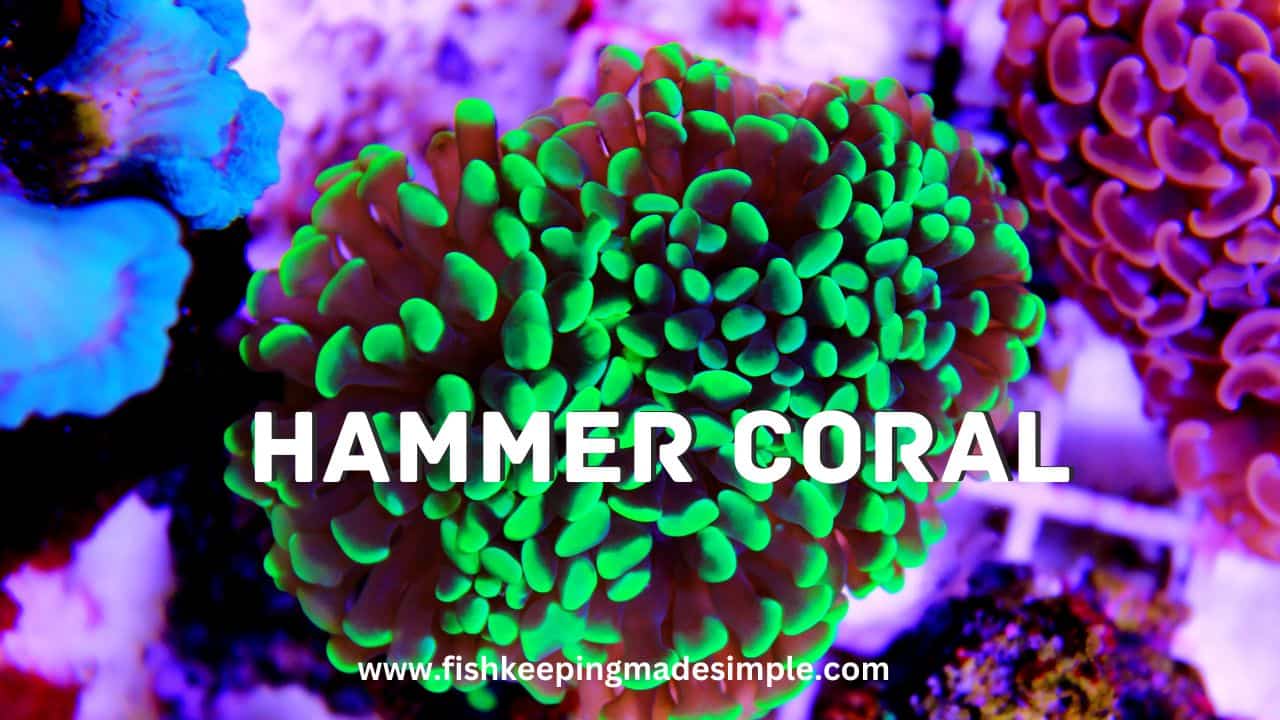
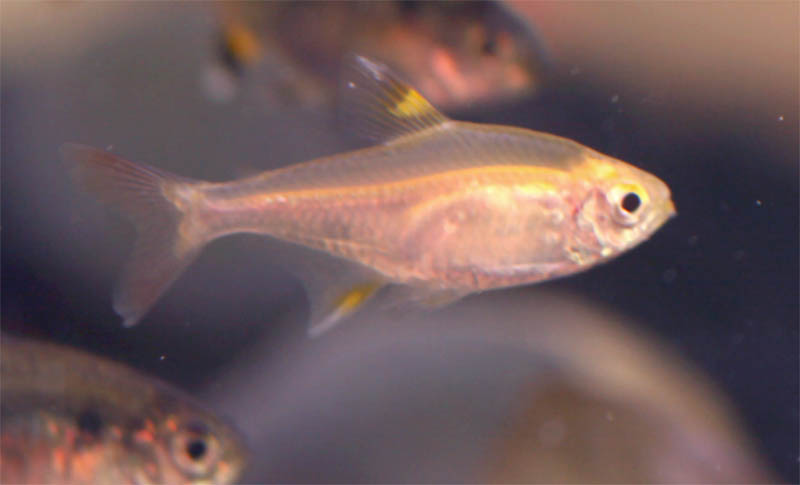
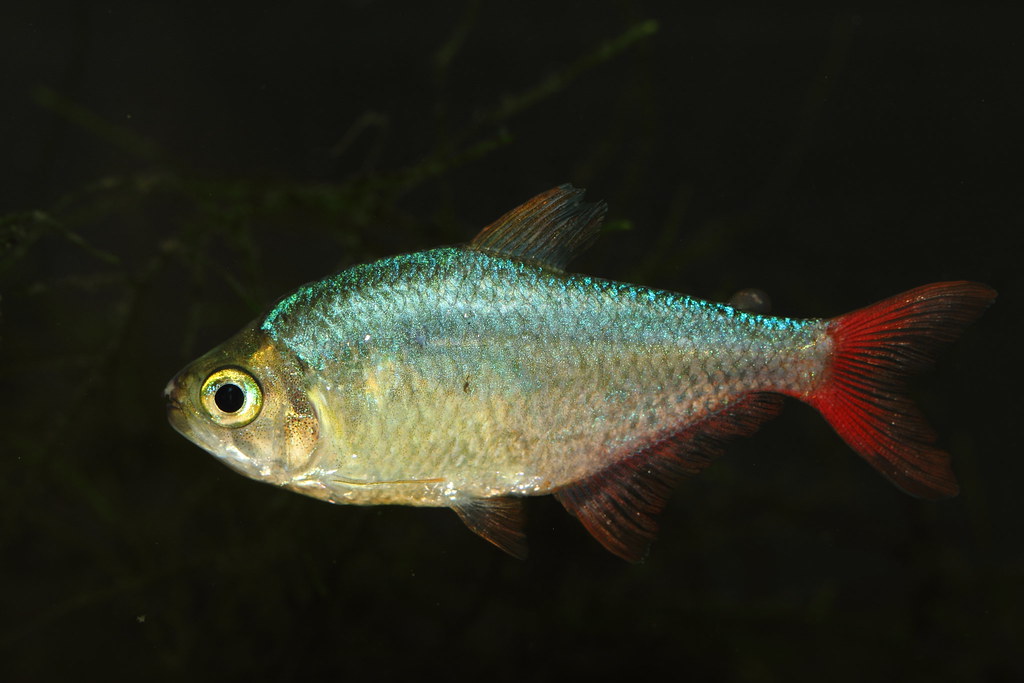
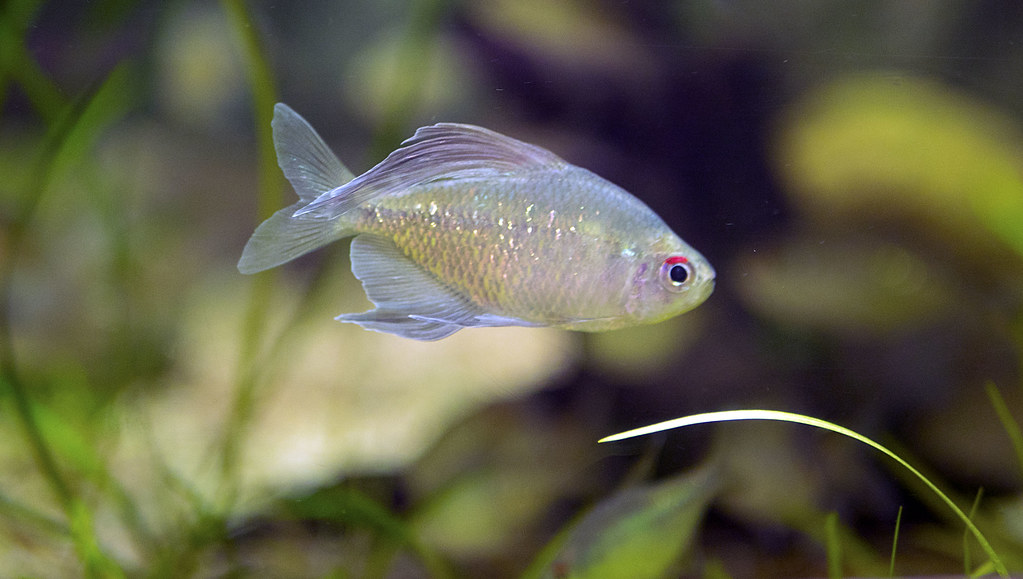
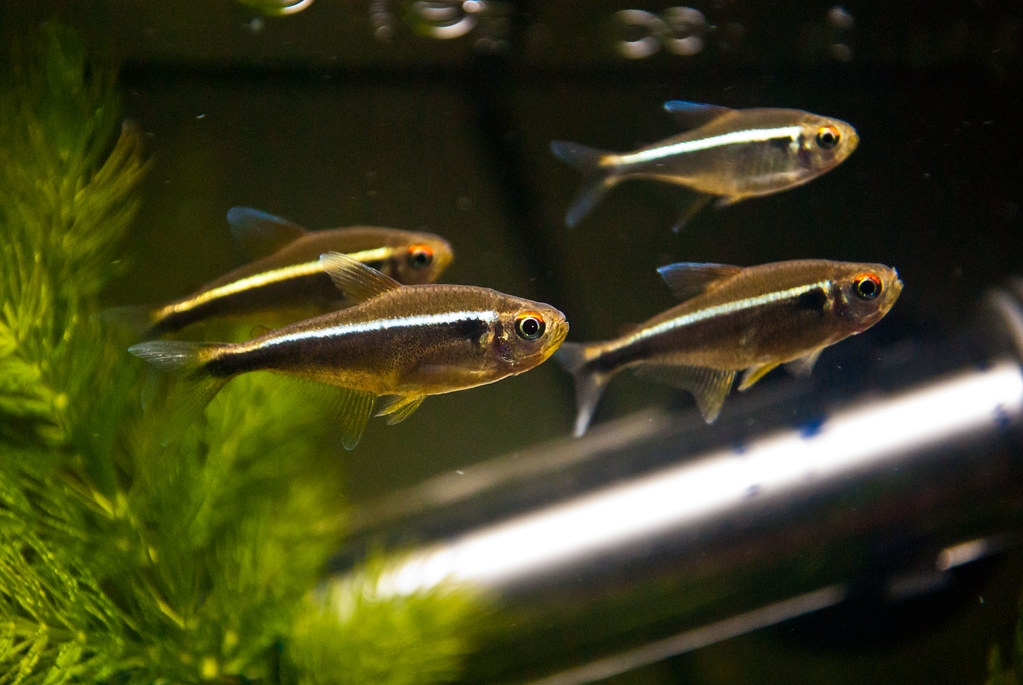
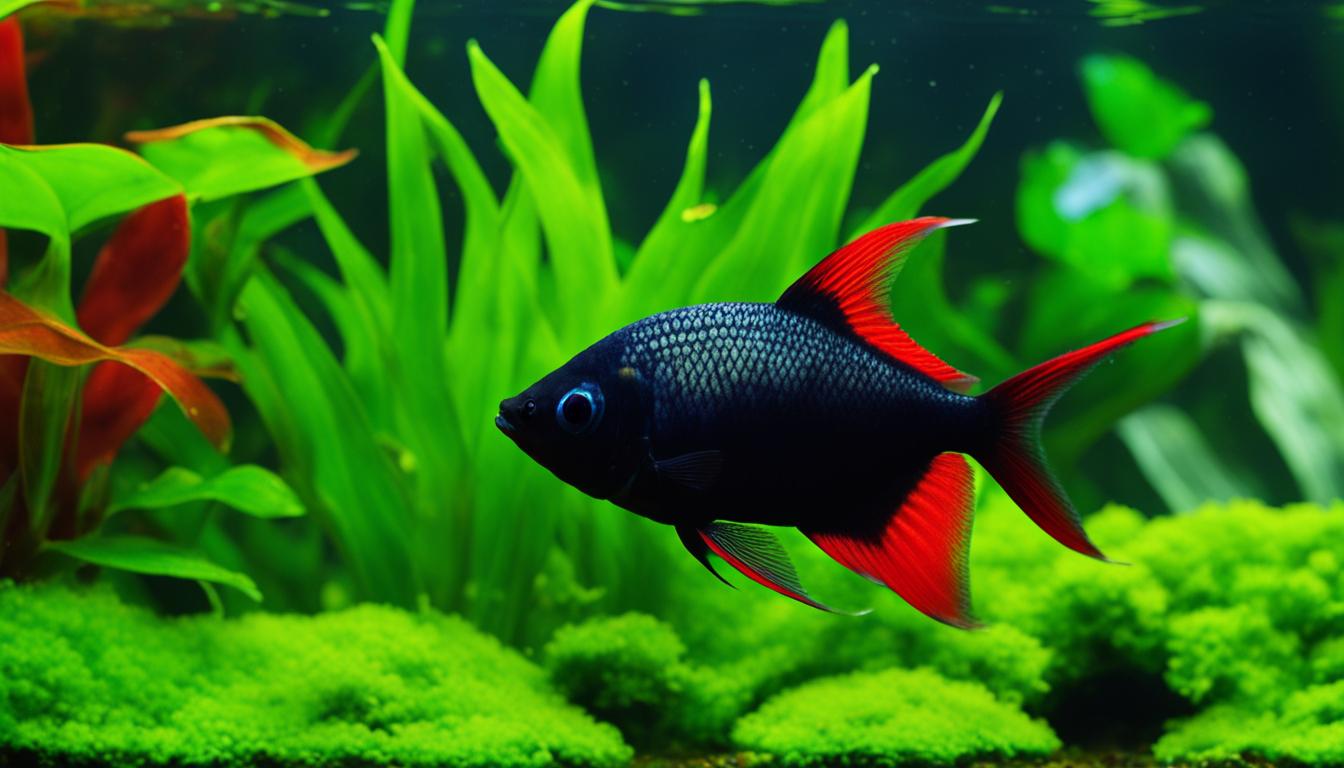

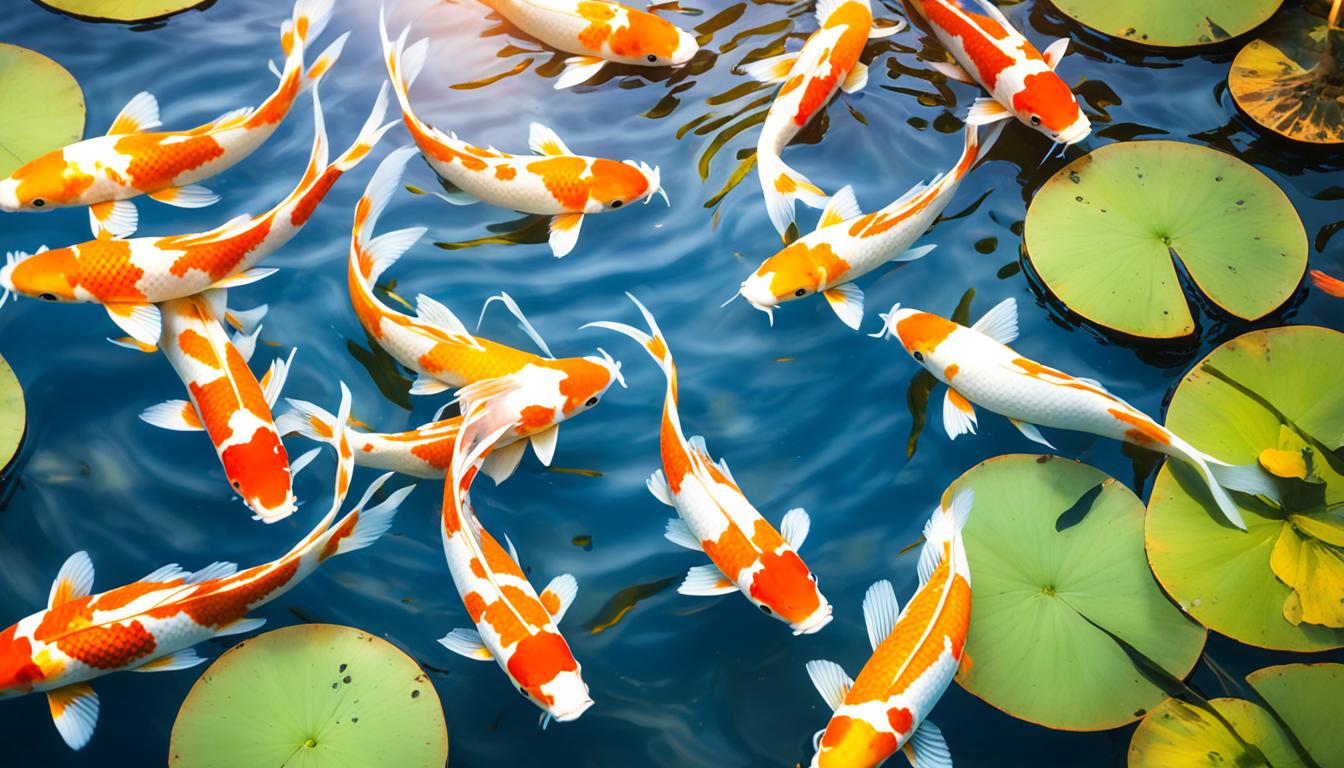
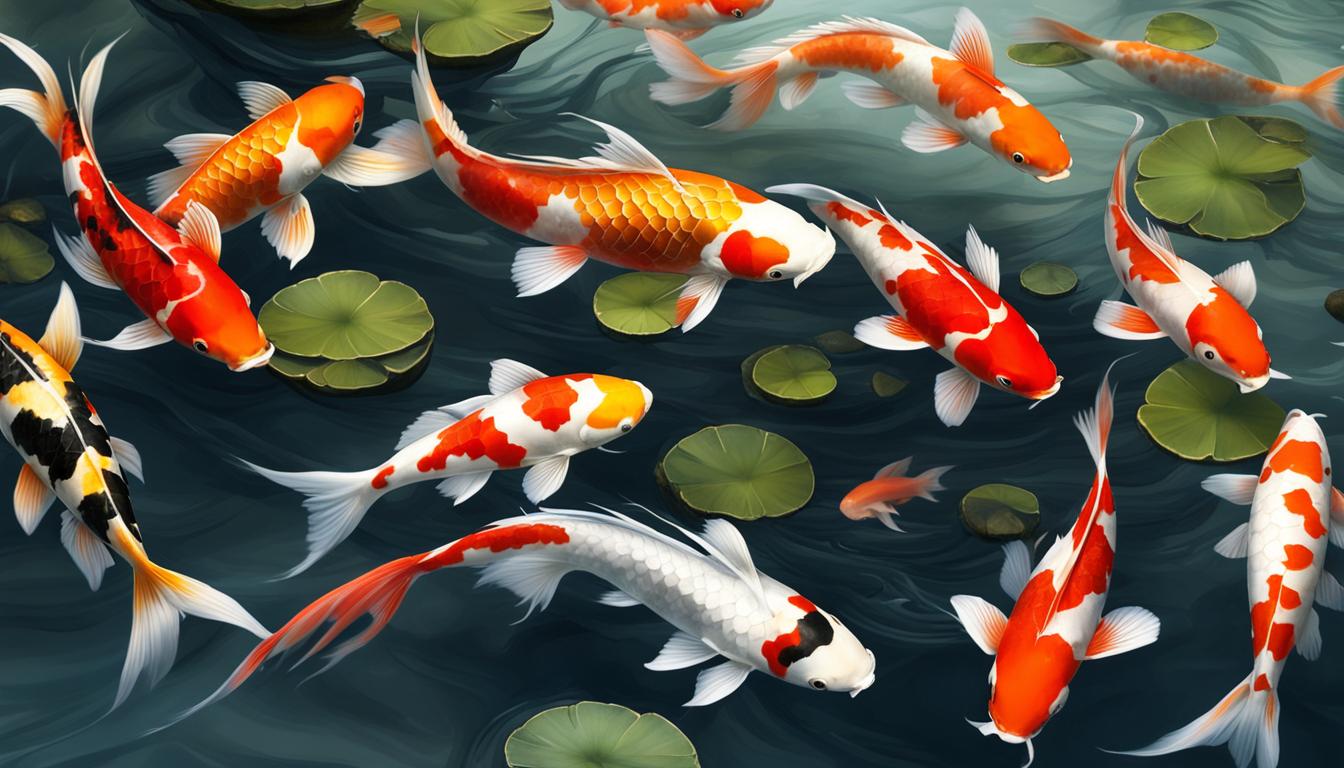
[…] the need for proper care to prevent any negative effects on the aquarium ecosystem. By following care guidelines and addressing common issues, hornwort can thrive in your […]
[…] Coral reefs: Cardinal Pyjamas are commonly found dwelling among coral reefs, seeking shelter and protection within the branches and crevices of the coral. […]
[…] behavior, you must provide your peacock cichlids with the ideal breeding environment. Start by setting up a separate breeding tank, ideally between 20 to 30 gallons, to allow for easy monitoring and maintenance. The tank should be […]
[…] to thrive. Creating the perfect environment for these unique and captivating creatures involves careful consideration of tank size, equipment selection, and aquascaping. In this section, we will discuss […]
[…] minimum tank size recommendations and avoiding common mistakes can ensure your pleco has a spacious and comfortable […]
[…] in their tank. It is easy to grow and maintain, making it a great option for beginners. With proper care and attention to common issues such as lighting and substrate needs, your Hair Grass aquarium can […]
[…] walk you through everything you need to know about caring for these delightful aquatic pets. From setting up the perfect tank environment to understanding their unique breeding habits, we’ll cover it all. So, get ready […]
[…] fish keeper, this information will help you create a vibrant and healthy aquarium community. From setting up the perfect tank to understanding their unique breeding habits, we will explore every aspect of endlers care and […]
[…] well-thought-out tank setup can significantly reduce Arowana Environmental Stress. Key considerations for a suitable tank setup […]
[…] ember tetra, from Brazil, is a small and beautiful fish perfect for small tanks. They are orange-red and very lively, which people love. These fish can live in many different […]
[…] Setting up a home for your tinfoil barbs is key. They love to swim and be around others. So, picking the right tank size is crucial. Also, keeping the water perfect for them is a must for their health. […]
[…] tank size for Panther Groupers can lead to several common issues and health problems, […]
[…] Keeping Caridina shrimp requires knowing common mistakes that can harm them. These sensitive creatures need special care to thrive in a home aquarium. […]
[…] an aquarium hobbyist, I understand the joy of maintaining a beautiful and thriving aquatic ecosystem. When it comes to shrimp tanks, there are several benefits to keeping a healthy shrimp population […]